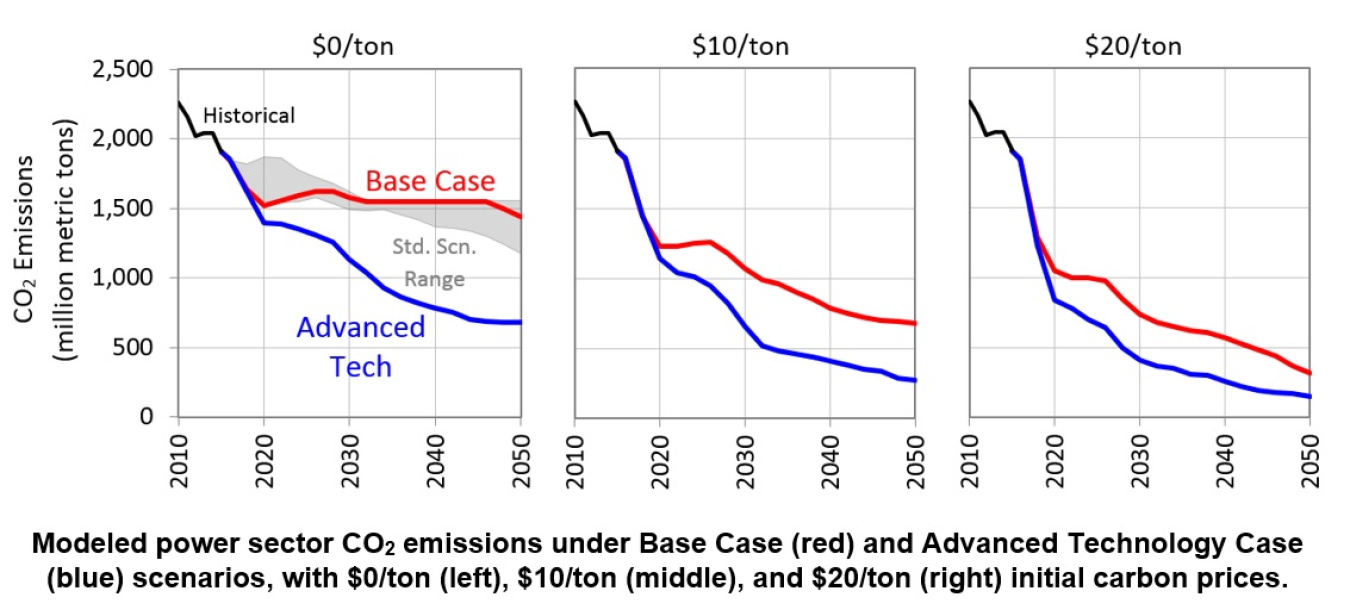This analysis explores how additional improvements in cost and performance of clean energy technologies could impact the future U.S. electric system.
October 12, 2017
The U.S. government, along with other governments, private corporations and organizations, invests significantly in research, development, demonstration and deployment (RDD&D) activities in clean energy technologies, in part to achieve the goal of a clean, secure, and reliable energy system. While specific outcomes and breakthroughs resulting from RDD&D investment are unpredictable, it can be instructive to explore the potential impacts of clean energy RDD&D activities in the power sector and to place those impacts in the context of current and anticipated market trends.
This analysis builds on and leverages analysis by the U.S. Department of Energy (DOE) titled “Energy CO2 Emissions Impacts of Clean Energy Technology Innovation and Policy” (DOE 2017). Similar to DOE (2017), this analysis explores how additional improvements in cost and performance of clean energy technologies could impact the future U.S. energy system; however, unlike the economy-wide modeling used in DOE (2017) this analysis is focused solely on the electricity sector and applies a different and more highly spatially-resolved electric sector model. More specifically, this study applies a scenario analysis approach to explore how assumed further advancements in clean electricity technologies would impact power sector generation mix, electricity system costs, and power sector carbon dioxide (CO2) emissions.
This work was conducted by the National Renewable Energy Laboratory and funded by the U.S. Department of Energy’s Office of Energy Efficiency and Renewable Energy (Office of Strategic Programs, Strategic Priorities and Impact Analysis Team).

